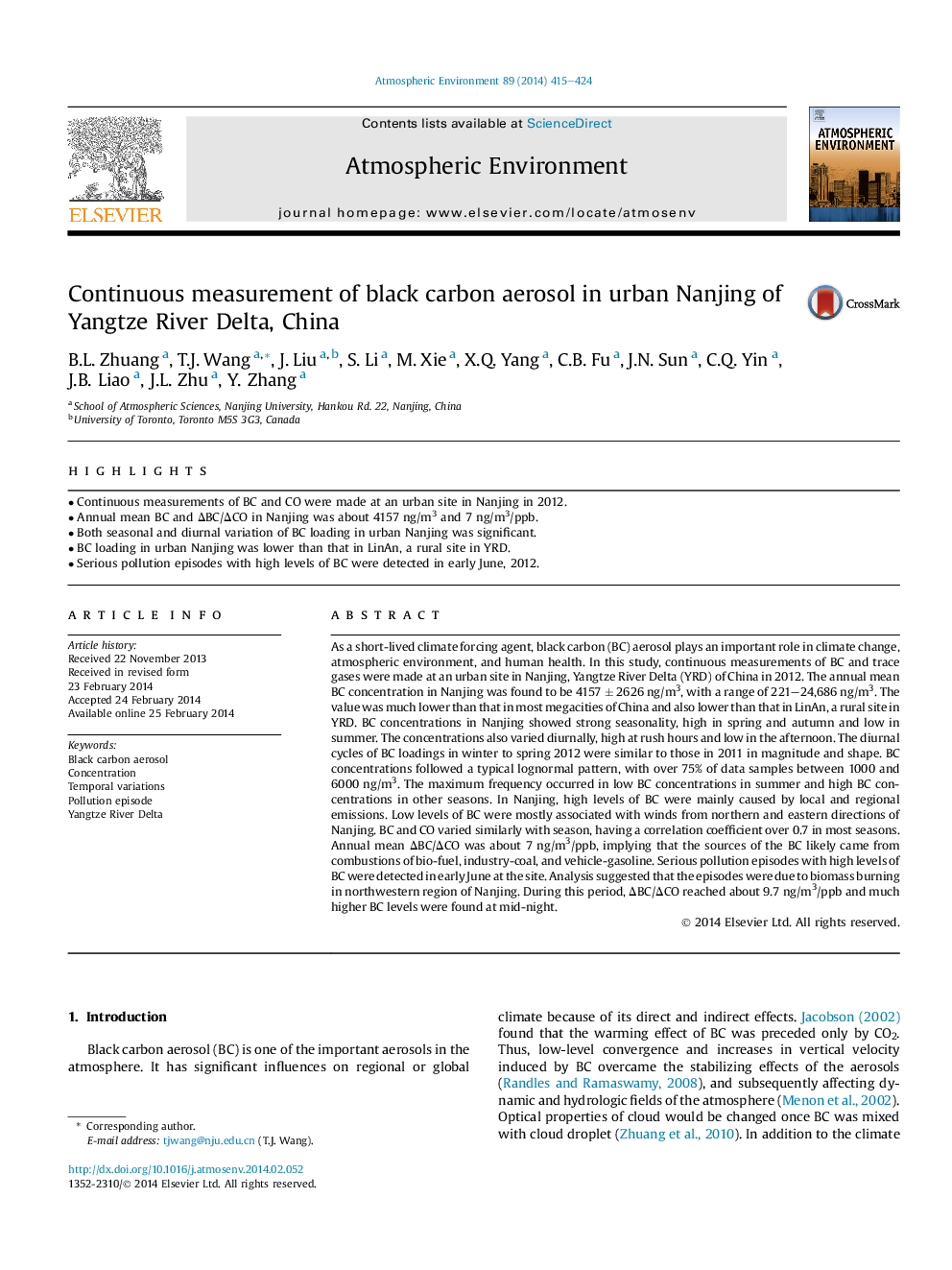| کد مقاله | کد نشریه | سال انتشار | مقاله انگلیسی | نسخه تمام متن |
|---|---|---|---|---|
| 6340230 | 1620382 | 2014 | 10 صفحه PDF | دانلود رایگان |
- Continuous measurements of BC and CO were made at an urban site in Nanjing in 2012.
- Annual mean BC and ÎBC/ÎCO in Nanjing was about 4157Â ng/m3 and 7Â ng/m3/ppb.
- Both seasonal and diurnal variation of BC loading in urban Nanjing was significant.
- BC loading in urban Nanjing was lower than that in LinAn, a rural site in YRD.
- Serious pollution episodes with high levels of BC were detected in early June, 2012.
As a short-lived climate forcing agent, black carbon (BC) aerosol plays an important role in climate change, atmospheric environment, and human health. In this study, continuous measurements of BC and trace gases were made at an urban site in Nanjing, Yangtze River Delta (YRD) of China in 2012. The annual mean BC concentration in Nanjing was found to be 4157 ± 2626 ng/m3, with a range of 221-24,686 ng/m3. The value was much lower than that in most megacities of China and also lower than that in LinAn, a rural site in YRD. BC concentrations in Nanjing showed strong seasonality, high in spring and autumn and low in summer. The concentrations also varied diurnally, high at rush hours and low in the afternoon. The diurnal cycles of BC loadings in winter to spring 2012 were similar to those in 2011 in magnitude and shape. BC concentrations followed a typical lognormal pattern, with over 75% of data samples between 1000 and 6000 ng/m3. The maximum frequency occurred in low BC concentrations in summer and high BC concentrations in other seasons. In Nanjing, high levels of BC were mainly caused by local and regional emissions. Low levels of BC were mostly associated with winds from northern and eastern directions of Nanjing. BC and CO varied similarly with season, having a correlation coefficient over 0.7 in most seasons. Annual mean ÎBC/ÎCO was about 7 ng/m3/ppb, implying that the sources of the BC likely came from combustions of bio-fuel, industry-coal, and vehicle-gasoline. Serious pollution episodes with high levels of BC were detected in early June at the site. Analysis suggested that the episodes were due to biomass burning in northwestern region of Nanjing. During this period, ÎBC/ÎCO reached about 9.7 ng/m3/ppb and much higher BC levels were found at mid-night.
Journal: Atmospheric Environment - Volume 89, June 2014, Pages 415-424
